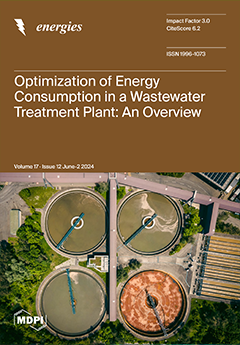Due to high greenhouse gas emissions, countries worldwide are stepping up their emission reduction efforts, and the global demand for new, carbon-free fuels is growing. Ammonia (NH
3) fuels are popular due to their high production volume, high energy efficiency, ease of
[...] Read more.
Due to high greenhouse gas emissions, countries worldwide are stepping up their emission reduction efforts, and the global demand for new, carbon-free fuels is growing. Ammonia (NH
3) fuels are popular due to their high production volume, high energy efficiency, ease of storage and transportation, and increased application in power equipment. However, their physical characteristics (e.g., unstable combustion, slow flame speed, and difficult ignition) limit their use in power equipment. Based on the structural properties of the power equipment, NH
3 fuel application and emissions characteristics were analyzed in detail. Combustion of NH
3 fuels and reduction measures for NO
x emissions (spark plug ignition, compression ignition, and gas turbines) were analyzed from various aspects of operating conditions (e.g., mixed fuel, fuel-to-exhaust ratio, and equivalence ratio), structure and strategy (e.g., number of spark plugs, compression ratio (CR), fuel injection, and ignition mode), and auxiliary combustion techniques (e.g., preheating, humidification, exhaust gas recirculation, and secondary air supply). The performance of various NH
3 fuel cell (FC) types was analyzed, with a focus on the maximum power achievable for different electrolyte systems. Additionally, the application and NO
x emissions of indirect NH
3 FCs were evaluated under flame and catalytic combustion conditions. The system efficiency of providing heat sources by burning pure NH
3, anode tail gas, and NH
3 decomposition gas was also compared. Based on a comprehensive literature review, the key factors influencing the performance and emissions of NH
3-powered equipment were identified. The challenges and limitations of NH
3-powered equipment were summarized, and potential strategies for improving efficiency and reducing emissions were proposed. These findings provide valuable insights for the future development and application of NH
3 FCs.
Full article





